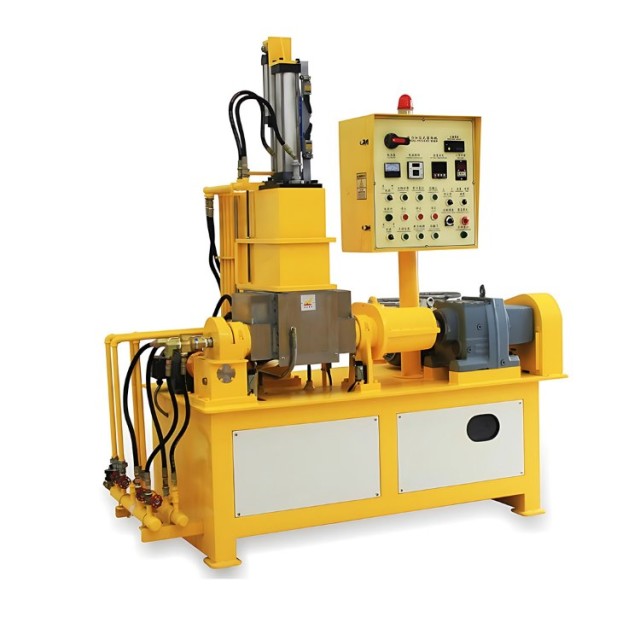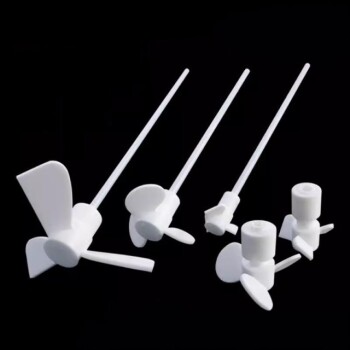
Rubber processing machine
Lab Internal Rubber Mixer Rubber Kneader Machine for Mixing and Kneading
Item Number : RPM-07
Price varies based on specs and customizations
- Mixing volume
- 1 / 3 / 5 / 10 L
- Control Mode
- Key Control/PLC Control (Optional)
- Discharge method
- Reverse discharge or open close type
- Flip angle
- 110℃
- Air pressure
- 0.5-0.8Mpa
Shipping:
Contact us to get shipping details Enjoy On-time Dispatch Guarantee.
Why Choose Us
Reliable PartnerEasy ordering process, quality products, and dedicated support for your business success.
Introduction
Lab internal rubber mixer is suitable for mixing, kneading and dispersing various chemical raw materials such as plastics, rubber, synthetic rubber, hot melt adhesive and various low-viscosity materials.
Detail & Parts




Application
- It is used for mixing, kneading and dispersing various chemical raw materials such as plastics, silicone rubber, synthetic rubber, metal powder, ceramic powder, etc.;
- New heating and cooling system, fast heating and good cooling effect;
- For metal powder and ceramic industries, the material contact part is sprayed with super wear-resistant alloy treatment to greatly improve the service life of the machine;
Principle
Two stirring blade shafts with spiral edges on the surface are enclosed in a "W"-shaped chamber. Under certain pressure and temperature conditions, the two shafts operate at a relative differential speed to stir and disperse the rubber.
Features
- The local device automatic temperature and time control system, precise operation, simple and easy, mixing up and take the best uniform dispersion effect
- The mixing tank to be dumped style, mixing shaft mechanical seal leak dry cleaning so easy to change colors easily
- Pressurized sealed mixing chamber to ensure the quality of the mixture outside and prevent environmental pollution
- Mixing tank using advanced alloy steel, wear-resistant steel surfaces are treated by surface abrasion particularly good, hard chrome plating
- Electronic control requires adjustments according to customer requirements
Technical specifications
| Model No. | RPM-07A | RPM-07B | RPM-07C | RPM-07D |
|---|---|---|---|---|
| Mixing volume | 1L | 3L | 5L | 10L |
| Control Mode | Key Control/PLC Control (Optional) | |||
| Discharge method | Reverse discharge or open close type | |||
| Drive motor | 3.75KW | 7.5KW | 11KW | 18.5KW |
| Flip motor | 0.75KW | 0.75KW | 0.75KW | 0.75KW |
| Rotor speed (front/rear) | 40/31r min(adjustable ) | |||
| Flip angle | 110℃ | |||
| Air pressure | 0.5-0.8Mpa | |||
| Volume (H*W*D) | 1800*900*1900mm | 1900*1300*1500mm | 1900*1300*1500mm | 2100*1100*2300mm |
| Weight (kg) | 850kg | 1300kg | 1500kg | 1800kg |
| Power Supply | 3∮,AC380V | |||
| ※Special models can be designed according to customers 'requirements. | ||||
FAQ
What Is A Rubber Calender?
What Is A Lab Internal Mixer Used For?
How Does A Lab Internal Mixer Work?
What Are The Key Components Of A Lab Internal Mixer?
What Types Of Materials Can Be Mixed Using A Lab Internal Mixer?
How Does Temperature Control Work In A Lab Internal Mixer?
What Are The Benefits Of Using A Lab Internal Mixer Over Other Mixing Methods?
What Safety Precautions Should Be Taken When Operating A Lab Internal Mixer?
What Are The Main Applications Of A Rubber Calender?
What Types Of Rubber Calenders Are Available?
What Are The Advantages Of Using A Rubber Calender?
How Does A Rubber Calender Work?
4.7
out of
5
Exceptional quality and durability. A must-have for any lab.
4.8
out of
5
Incredible value for money. Fast and efficient mixing.
4.9
out of
5
Technologically advanced. Simplifies complex mixing processes.
4.7
out of
5
Speedy delivery and excellent customer service. Highly recommend.
4.8
out of
5
Outstanding performance. Reduces mixing time significantly.
4.9
out of
5
Robust and reliable. Handles tough materials with ease.
4.7
out of
5
Innovative design. Enhances lab productivity immensely.
4.8
out of
5
User-friendly interface. Makes operation a breeze.
4.9
out of
5
Highly efficient. Perfect for precision mixing needs.
4.7
out of
5
Durable and long-lasting. A great investment for any lab.
4.8
out of
5
Advanced technology. Streamlines our lab processes.
4.9
out of
5
Excellent build quality. Handles high-viscosity materials well.
4.7
out of
5
Quick and efficient. Great for time-sensitive projects.
4.8
out of
5
Reliable and consistent. A key asset in our lab.
4.9
out of
5
Top-notch performance. Simplifies complex mixing tasks.
4.7
out of
5
Efficient and durable. A valuable addition to our setup.
4.8
out of
5
Innovative features. Enhances our lab's capabilities.
4.9
out of
5
Highly recommended. Streamlines our mixing processes.
4.7
out of
5
Excellent value. Boosts our lab's efficiency significantly.
REQUEST A QUOTE
Our professional team will reply to you within one business day. Please feel free to contact us!
Related Products

Small Lab Rubber Calendering Machine
Small lab rubber calendering machine is used for producing thin, continuous sheets of plastic or rubber materials. It is commonly employed in laboratories, small-scale production facilities, and prototyping environments to create films, coatings, and laminates with precise thickness and surface finish.

Open Type Two Roll Mixing Mill Machine for Rubber Crusher
Rubber crusher open mixing mill/Open two roller rubber mixing mill machine is suitable for mixing and dispersing rubber, plastic raw materials, pigments, masterbatches and other high molecular polymers.

Laboratory Disc Rotary Mixer for Efficient Sample Mixing and Homogenization
Efficient Laboratory Disc Rotary Mixer for Precise Sample Mixing, Versatile for Various Applications, DC Motor and Microcomputer Control, Adjustable Speed and Angle.

Vibration Mill for Efficient Sample Preparation, Suitable for Crushing and Grinding a Variety of Materials with Analytical Precision. Supports Dry / Wet / Cryogenic Grinding and Vacuum/Inert Gas Protection.

Laboratory Ten-Body Horizontal Jar Mill for Lab Use
The Ten-body horizontal jar mill is for 10 ball mill pots (3000ml or less). It has frequency conversion control, rubber roller movement, and PE protective cover.

Custom PTFE Teflon Parts Manufacturer Laboratory High Temperature Mixing Paddle Mixer
The PTFE mixing paddle mixer is a versatile and robust tool designed for laboratory use, particularly in environments requiring high resistance to chemicals and extreme temperatures. Crafted from high-quality PTFE, this mixer boasts several key features that enhance its functionality and durability.

Laboratory Vortex Mixer Orbital Shaker Multifunctional Rotation Oscillation Mixer
The inching mixer is small in size, mixes quickly and thoroughly, and the liquid is in a vortex shape, which can mix all the test solutions attached to the tube wall.

Laboratory Vibratory Sieve Shaker Machine for Dry and Wet Three-Dimensional Sieving
KT-VD200 can be used for sieving tasks of dry and wet samples in the laboratory. The screening quality is 20g-3kg. The product is designed with a unique mechanical structure and an electromagnetic vibrating body with a vibration frequency of 3000 times per minute.

Three-dimensional electromagnetic sieving instrument
KT-VT150 is a desktop sample processing instrument for both sieving and grinding. Grinding and sieving can be used both dry and wet. The vibration amplitude is 5mm and the vibration frequency is 3000-3600 times/min.

Lab Plastic PVC Calender Stretch Film Casting Machine for Film Testing
The cast film machine is designed for the molding of polymer cast film products and has multiple processing functions such as casting, extrusion, stretching, and compounding.

Laboratory Oscillating Orbital Shaker
Mixer-OT orbital shaker uses brushless motor, which can run for a long time. It is suitable for vibration tasks of culture dishes, flasks and beakers.

Assemble Lab Cylindrical Press Mold
Get reliable and precise molding with Assemble Lab Cylindrical Press Mold. Perfect for ultra-fine powder or delicate samples, widely used in material research and development.

Precision Machined Zirconia Ceramic Ball for Engineering Advanced Fine Ceramics
zirconia ceramic ball have the characteristics of high strength, high hardness, PPM wear level, high fracture toughness, good wear resistance, and high specific gravity.

Isostatic Molding Pressing Molds for Lab
Explore high-performance isostatic pressing molds for advanced material processing. Ideal for achieving uniform density and strength in manufacturing.

Engineering Advanced Fine Ceramics Head Tweezers with Pointed Elbow Zirconia Ceramic Tip
Zirconia ceramic tweezers are a high-precision tool made of advanced ceramic materials, especially suitable for operating environments that require high precision and corrosion resistance. This type of tweezers not only has excellent physical properties, but is also popular in the medical and laboratory fields because of its biocompatibility.

Laboratory Micro Horizontal Jar Mill for Precision Sample Preparation in Research and Analysis
Discover the Micro Horizontal Jar Mill for precise sample preparation in research and analysis. Ideal for XRD, geology, chemistry, and more.
Related Articles

Basic Mixing Equipment in the Laboratory
Overview of essential laboratory mixing devices and their functionalities.

Why Your Leather Embossing Is Inconsistent—And How to Fix It for Good
Struggling with faint, blurry, or scorched leather embossing? Discover the scientific reason it fails and how to achieve perfect, repeatable results.

The Fidelity of Light: Preserving the Quartz Interface in Spectroelectrochemistry
The quartz window is the critical interface between your sample and your data. Learn why protecting it from oils, scratches, and solarization is vital for optical accuracy.